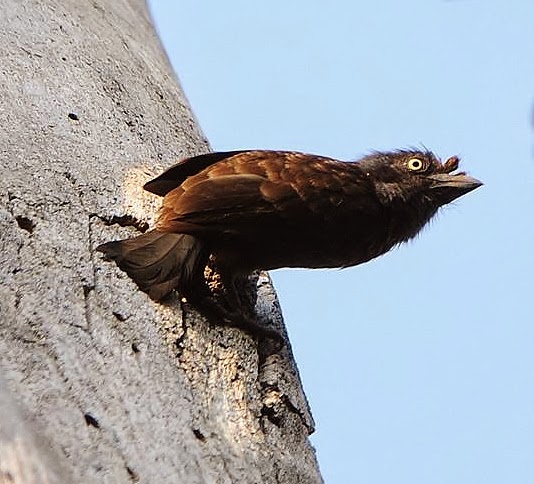 | |
| Photo by Tadeusz Stawarczyk (Internet Bird Collection) |
Common name:
grey-throated barbet (en); barbudo-de-garganta-cinzenta (pt); barbican à gorge grise (fr); barbudo de garganta gris (es); trauerbartvogel (de)
Taxonomy:
Order Piciformes
Family Capitonidae
Range:
This species is found in central Africa, from Cameroon to south-western Congo and through D.R. Congo and the Central African Republic into South Sudan, western Kenya, north-western Tanzania and marginally into northern Angola.
Size:
These birds are 16,5-20 cm long and weigh 45-75 g.
Habitat:
The grey-throated barbet is mostly found in moist tropical forests, both in lowland and mountainous areas, but also uses pastures, plantations and rural gardens. They re present from sea level up to an altitude of 2.450 m.
Diet:
They feed mainly of fruits, including wild fruits such as figs and cultivated fruits. They also hunt various invertebrates, such as ants, cicadas, dragonflies, crickets, locusts, beetles, moths, mantids, as well as scorpions and centipedes. On occasion, they may even feed on lizards, frogs and geckos.
Breeding:
Grey-throated barbets net in tree cavities. The female lays 2-4 eggs, which are incubated by both parents for 13-15 days. The chicks are raised by both parents but there is no information regarding the length of the fledgling period.
Conservation:
IUCN status – LC (Least Concern)
This species has a very large breeding range and is reported to be widespread and relatively abundant. The population is suspected to be in decline owing to removal of dead trees which are required for nesting and roosting, and habitat fragmentation.







